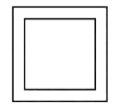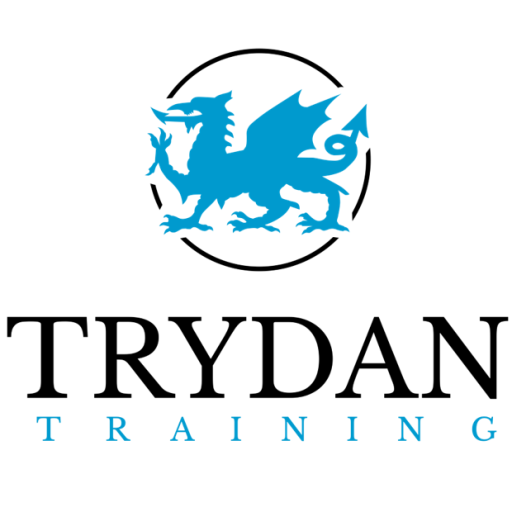PAT Exam 2
Quiz Summary
0 of 50 Questions completed
Questions:
Information
You have already completed the quiz before. Hence you can not start it again.
Quiz is loading…
You must sign in or sign up to start the quiz.
You must first complete the following:
Results
Results
0 of 50 Questions answered correctly
Your time:
Time has elapsed
You have reached 0 of 0 point(s), (0)
Earned Point(s): 0 of 0, (0)
0 Essay(s) Pending (Possible Point(s): 0)
Categories
- Not categorized 0%
- 1
- 2
- 3
- 4
- 5
- 6
- 7
- 8
- 9
- 10
- 11
- 12
- 13
- 14
- 15
- 16
- 17
- 18
- 19
- 20
- 21
- 22
- 23
- 24
- 25
- 26
- 27
- 28
- 29
- 30
- 31
- 32
- 33
- 34
- 35
- 36
- 37
- 38
- 39
- 40
- 41
- 42
- 43
- 44
- 45
- 46
- 47
- 48
- 49
- 50
- Current
- Review
- Answered
- Correct
- Incorrect
-
Question 1 of 50
1. Question
01. Which one of the following is specified in the Provision and Use of Work Equipment Regulations?
-
Question 2 of 50
2. Question
02. The IET Code of Practice for In-service Inspection and Testing of Electrical Equipment applies to equipment supplied by a d.c. voltage up to and including (between Conductors)
-
Question 3 of 50
3. Question
03. Which one of the following activities in a particular location is excluded from the Health and Safety at Work Act?
-
Question 4 of 50
4. Question
04. Which document gives advice on test probes, leads and adaptors when mains voltages need to be measured voltage exceeding
-
Question 5 of 50
5. Question
05. HSE guidance on maintaining portable and transportable electrical equipment can be found in document
-
Question 6 of 50
6. Question
06. Which one of the following items is covered in the scope of the IET Code of Practice for In-service Inspection and Testing of Electrical Equipment?
-
Question 7 of 50
7. Question
07. Electrical Equipment supplied as part of a tenancy should be?
-
Question 8 of 50
8. Question
08. Which of the following equipment types is a food warmer, which is on wheels and supplied by a 13 A plug?
-
Question 9 of 50
9. Question
09. Which of the following items of equipment is identified by the symbol shown?

-
Question 10 of 50
10. Question
10. Class I construction may incorporate unearthed metal separated from live parts by
-
Question 11 of 50
11. Question
11. The method of protection against electric shock from equipment bearing the symbol shown is by

-
Question 12 of 50
12. Question
12. The term “Safeguard that provides protection under normal operating conditions and under abnormal operating conditions whenever an energy source capable of causing pain or injury is present in the equipment” is known as what?
-
Question 13 of 50
13. Question
13. For protection against electric shock, Class III equipment relies upon a supply source that is
-
Question 14 of 50
14. Question
14. The definition of an exposed-conductive-part is the metallic part of an appliance which can be touched and
-
Question 15 of 50
15. Question
15. A conductor having a cross-sectional-area (csa) of 4 mm² has a resistance of 0.2Ω. If the csa was halved, the resistance would be
-
Question 16 of 50
16. Question
16. What rating of fuse is required for a 0.5mm2 cable fitted into a non-rewireable plug on equipment with a high inrush current?
-
Question 17 of 50
17. Question
17. Requirements for the inspection and test of the fixed electrical installation are in
-
Question 18 of 50
18. Question
18. Which one of the following types of Class I equipment would require more frequent inspection from new, if located in a hotel room?
-
Question 19 of 50
19. Question
19. The correct colour code for 5 core cable is
-
Question 20 of 50
20. Question
20. The length of an extension lead using a flexible cord of 1.25mm² core area, should not exceed
-
Question 21 of 50
21. Question
21. When inspecting the condition of equipment, it should be ascertained that the
-
Question 22 of 50
22. Question
22. An additional test to the insulation resistance test may damage equipment, an alternative test may be applied by measuring the
-
Question 23 of 50
23. Question
23. A 500 V d.c. test would be applied to an item of Class I equipment in order to verify
-
Question 24 of 50
24. Question
24. Labels applied to items of electrical equipment may be machine-readable in order to allow the portable appliance tester to
-
Question 25 of 50
25. Question
25. Which of the following sets of factors influence the initial frequency between inspection and testing of equipment?
-
Question 26 of 50
26. Question
26. Which one of the following is the most important reason for maintaining test instrument records?
-
Question 27 of 50
27. Question
27. Which of the following is the resistance of a 0.5 mm² protective conductor at a temperature of 20°C having a length of 1.5 m?
-
Question 28 of 50
28. Question
28. Which one of the following actions should be taken if the users of new equipment are unlikely to report abuse of the equipment?
-
Question 29 of 50
29. Question
29. An extension lead of length 15 m has a protective conductor of nominal cross-sectional area 1.5 mm². The nominal resistance of the protective conductor at 20°C will be
-
Question 30 of 50
30. Question
30. An older piece of equipment cord has conductors with a csa of 0.5 mm². The maximum fuse rating within the associated 13 A standard plug should not exceed
-
Question 31 of 50
31. Question
31. Before inspecting the condition of equipment, the
-
Question 32 of 50
32. Question
32. When testing equipment classified as Class II FE, which are earthed only for the functional/screening purposes, these parts should be
-
Question 33 of 50
33. Question
33. When using the applied voltage test method to determine insulation resistance, the voltage should be
-
Question 34 of 50
34. Question
34. Which one of the following items of electrical equipment could possibly be damaged by the application of an insulation resistance test?
-
Question 35 of 50
35. Question
35. Which one of the following appliance cord lengths would be correct if a 0.75 mm² conductor had a resistance value of 0.26Ω when measured end to end?
-
Question 36 of 50
36. Question
36. When carrying out an insulation resistance test the instrument should be capable of maintaining the test voltage with a load of
-
Question 37 of 50
37. Question
37. Whilst carrying out a polarity test on a replacement three-core lead set, it is discovered that line and earth connections within the mains plug have been reversed. Using this item of equipment without rectification of the fault, would result in
-
Question 38 of 50
38. Question
38. Which one of the following is the final test to be performed to an appliance, such as an electric kettle?
-
Question 39 of 50
39. Question
39. Which one of the following checks should be made regularly on a microwave oven?
-
Question 40 of 50
40. Question
40. Which IK rating has an impact energy of 1 joule?
-
Question 41 of 50
41. Question
41. Recalibration of test equipment should take place if the results waver by
-
Question 42 of 50
42. Question
42. Which of the following would be used to test that an RCD performs within specific times?
-
Question 43 of 50
43. Question
43. An insulation resistance test on a Class I electric drill shows an insulation resistance value of 1.8 MΩ between the live conductor and the protective conductor. A similar test carried out three months previously showed an insulation resistance value of 2.2 MΩ. A possible cause for this result could be
-
Question 44 of 50
44. Question
44. Where equipment has a high protective conductor current which of the following documents contains further information.
-
Question 45 of 50
45. Question
45. Which of the following is not a common approval mark on a fuse?
-
Question 46 of 50
46. Question
46. Whilst carrying out an earth continuity measurement on a Class I electric fire, the measured resistance slightly increases during the period of test. One possible reason for this increase in resistance could be
-
Question 47 of 50
47. Question
- 47. Which of the following statements is correct following a combined inspection and test of electrical equipment?
-
Question 48 of 50
48. Question
48. Which one of the following complies with recommendations in the IET Code of Practice for In-service Inspection and Testing of Electrical Equipment, for the information indicated on a PASS Label
-
Question 49 of 50
49. Question
49. If equipment is found to be damaged or faulty on inspection or test, an assessment must be made by a responsible person as to the
-
Question 50 of 50
50. Question
50. Which one of the following items of documentation would be maintained by an organisation carrying out in-service inspection and testing of electrical equipment?
